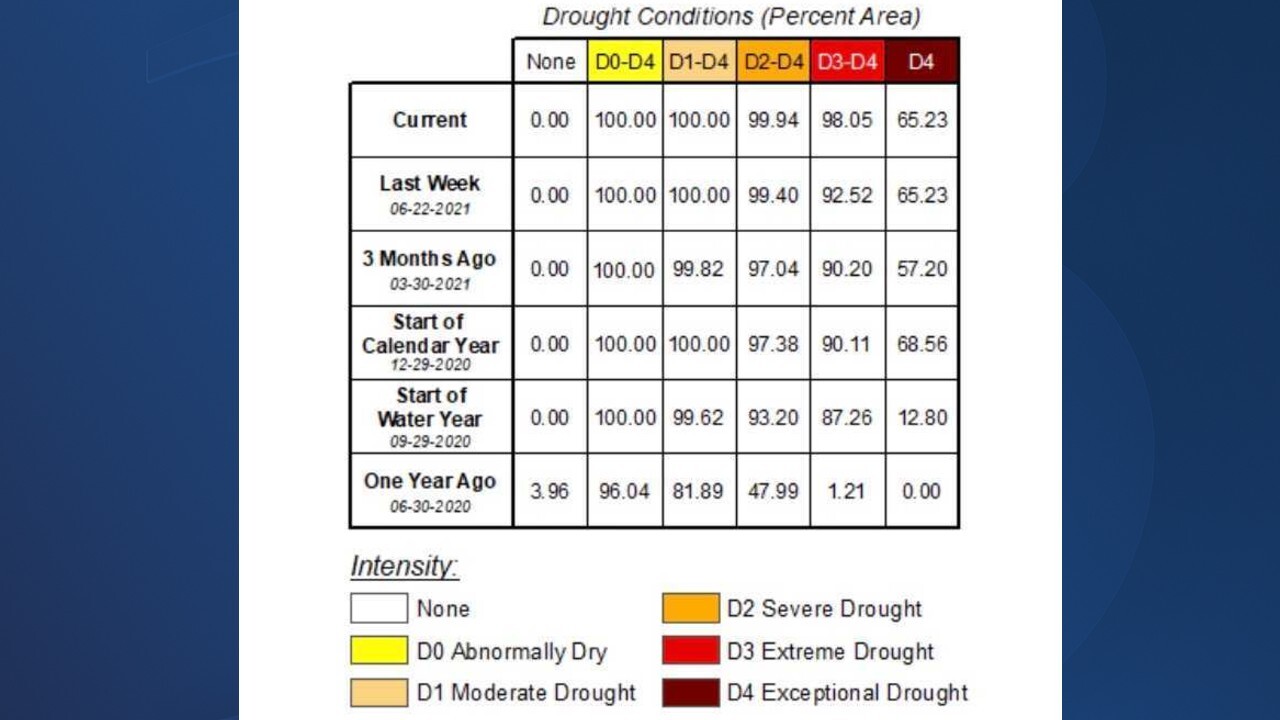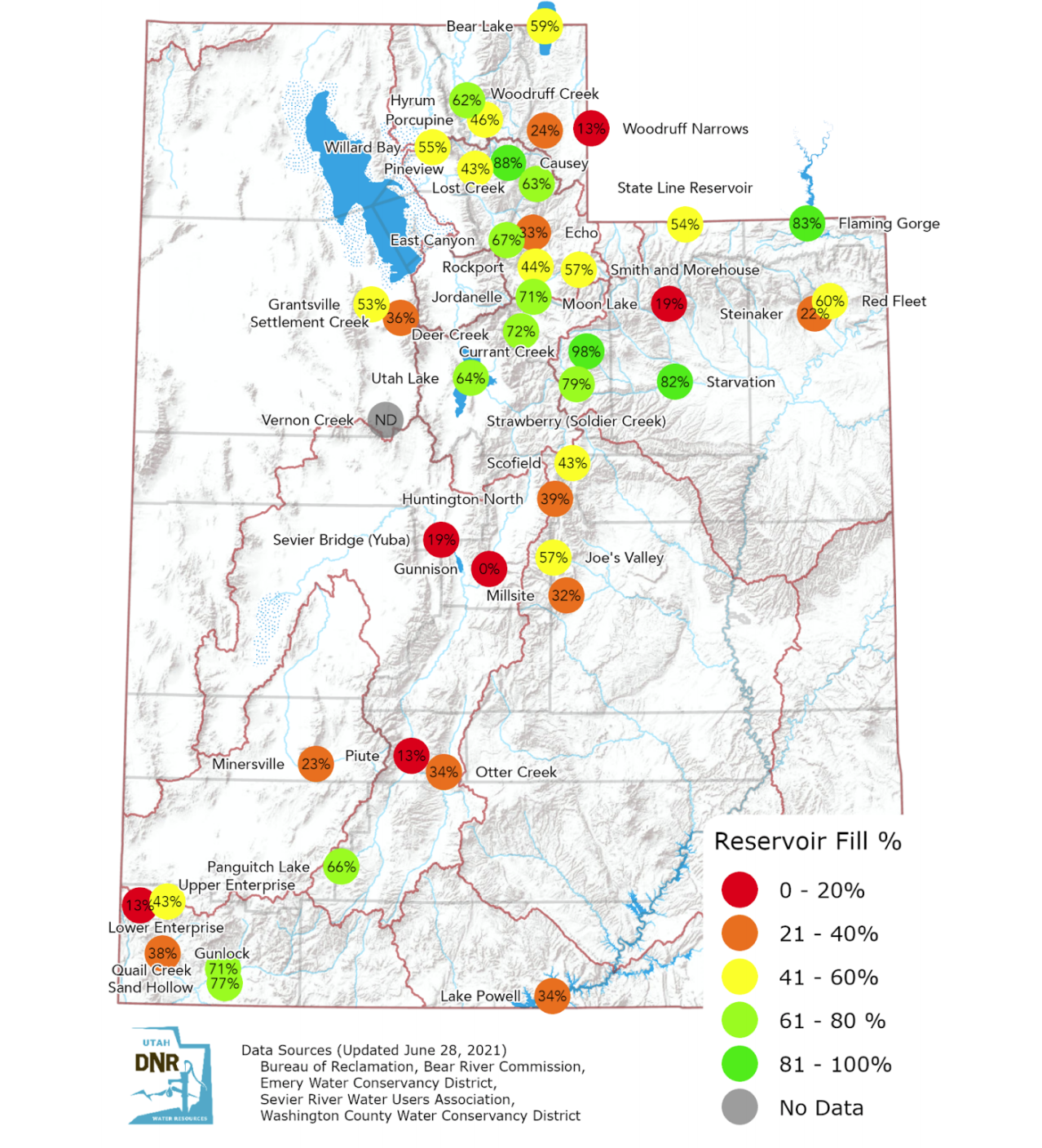SALT LAKE CITY — The weekly drought report by the Utah Department of Natural Resources showed that despite cooler temperatures and rain showers, drought conditions around the state continue to worsen.
New data shows that 98% of Utah is experiencing "extreme or "exceptional" drought conditions, compared to 92% last week. Temperatures were 5.6 degrees Fahrenheit above average across the state, which is slightly cooler than previously reported.

Utah experienced an average of about 0.03 inches of rain over the last week, however the above-normal precipitation didn't do much to lessen drought conditions.
READ: Zion National Park reopens, but future flooding remains 'probable'
Scattered rain showers did help soil moisture slightly. The report says soil moisture is now at 11% drier than average compared to 12% that was reported previously.
Streamflow continued to decline and even less water is getting to reservoirs across the state. 71 of Utah's 96 streams are reportedly below normal. Seven streams are flowing at their lowest levels ever recorded, which is a decrease from 14 streams that were previously reported flowing at record low levels last week.
Reservoir storage is also continuing to decline, whereas last week storage was at 63%, this week, storage is at 61%. Two more of Utah's largest reservoirs are below 55% of available capacity this week, bringing the total up to 23 out of the 42 reservoirs statewide.
READ: Utah prepares for water shortages in ongoing drought emergency
An updated map in the report shows Millsite Reservoir as the lowest filled reservoir in Utah, currently at 0%. Currant Creek Reservoir is currently the most filled reservoir at 98% fill capacity.

The Great Salt Lake is only three inches from its historic low recorded in 1963, last week it was five inches away from hitting a new low.
The updated report also shows that 76 well replacement and deepening requests have been made statewide, which is an increase of four from the last report. If these requests continue to steadily increase, Utah will pass its annual average well replacements in 2021. The average annual count of requests over the last 5 years is 107.



